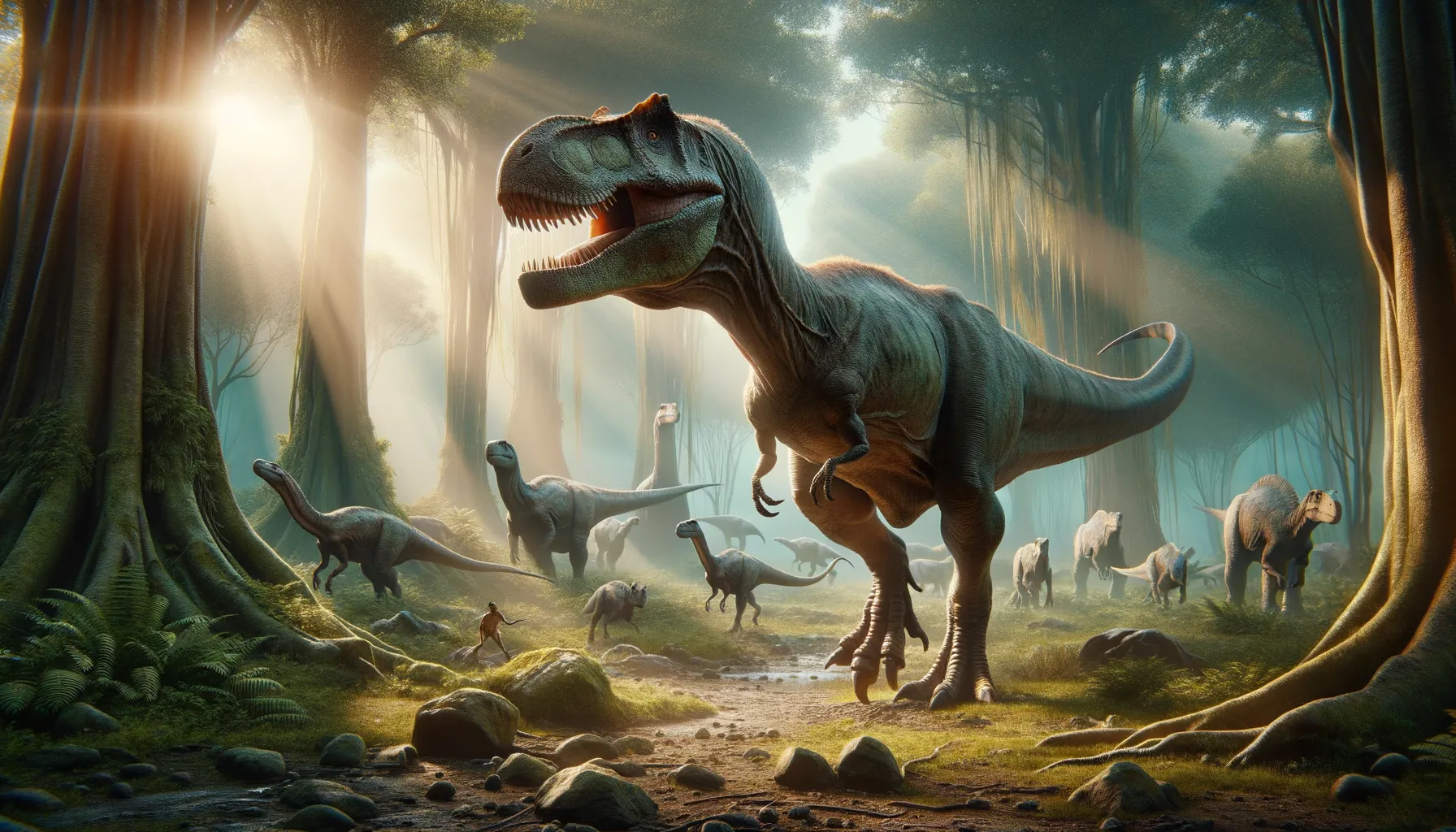
Labrosaurus
Mystery of the Jurassic Era.
Period
Jurassic
Length
Supposedly similar to other theropods of its time.
Height
Estimated to be medium-sized, height unclear.
Weight
Exact weight is unknown due to sparse remains.
Labrosaurus is a lesser-known dinosaur, originally thought to be a distinct genus. It was first described in the late 19th century from limited fossil material. Early interpretations linked it to theropod characteristics, which are prevalent in other Jurassic dinosaurs. However, its name and classification sparked debate, leading to eventual doubts about its distinct identity. Today, it's often considered a dubious genus, highlighting the complexity and ongoing challenges of paleontological classification.
Diet
Likely a carnivorous diet similar to other theropods. Its sharp teeth would have been used for hunting small to medium-sized prey, providing necessary proteins for survival.
Hunting
Information on its hunting behavior remains speculative due to scarce fossil evidence. It might have used its speed and agility to catch prey, like many other theropods.
Environmental challenges
Labrosaurus lived during the Jurassic period when environmental conditions were rapidly changing. Fluctuating sea levels and volcanic activity might have posed challenges to its survival. The competition with other predatory species would have also influenced its adaptability. Its environment likely consisted of diverse ecosystems, which required constant adaptation for survival.
Speed
Unknown due to limited fossil evidence.
Lifespan
Not enough data to determine its lifespan.
First discovery
Discovered in 1878 by Othniel Charles Marsh.
Fun Facts
- Labrosaurus is known primarily from a single fossil jawbone, which has led to much debate about its classification.
- Originally thought to be a unique dinosaur species, Labrosaurus may actually be a misidentified Allosaurus or a juvenile specimen of another dinosaur.
- The name Labrosaurus means 'lip lizard,' but its true appearance remains a mystery due to the limited fossil evidence.
- Despite its uncertain classification, Labrosaurus is part of the theropod group, which includes famous carnivores like T. rex.
- Labrosaurus was first described in 1870 by paleontologist Othniel Charles Marsh, known for his work during the 'Bone Wars.'
- The confusion surrounding Labrosaurus highlights the complexities and ongoing debates in paleontology about proper dinosaur classification.
- Many paleontologists now consider Labrosaurus a 'nomen dubium,' meaning its classification is doubtful or unclear.
Growth and Development
Little is known about the specific growth and development patterns of Labrosaurus due to limited fossil records. As a theropod, it's probable that it shared common developmental traits with related species. Juveniles would have had to quickly learn survival skills to thrive. Development stages would have involved gradual increases in size and strength.
Habitat
Labrosaurus likely inhabited varied habitats during the Jurassic. These environments could have ranged from dense forests to open plains. Its habitat choices would have been influenced by prey availability. Fossil evidence is scarce, so exact habitats remain speculative.
Interaction with other species
Labrosaurus would have interacted with both prey and potential competitors. Its role as a predator meant it needed to outcompete rivals for food. Interaction with herbivorous dinosaurs would have been for hunting purposes. More comprehensive evidence is needed to confirm these interactions.
Natural lifespan
Details about Labrosaurus's natural lifespan remain undiscovered.
Reproduction
Reproductive strategies of Labrosaurus are unknown. It may have followed typical theropod nesting behaviors. Pair bonding or solitary breeding strategies are possible. Limited data makes it difficult to draw firm conclusions.
Social behaviour
Social behavior insights are limited due to fuzzy fossil data. Labrosaurus might have been a solitary hunter like many theropods. Alternatively, it could have lived in small groups. Without definitive fossils, social patterns remain speculative.
Fossil locations
Fossils attributed to Labrosaurus were originally found in North America. Exact locations and abundance are contentious. The scarcity of material makes it challenging to draw firm conclusions. Continued fossil discoveries help clarify its historical distribution.
